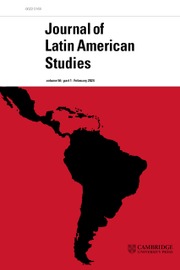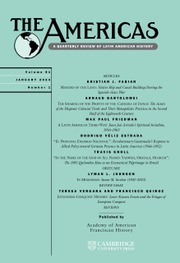The Women Who Threw Corn
This book tells the stories of women from Spain, North Africa, Senegambia, and Canaries accused of sorcery in sixteenth-century Mexico for adapting native magic and healing practices. These non-native women – the mulata of Seville who cured the evil eye; the Canarian daughter of a Count who ate peyote and mixed her bath water into a man's mustard supply; the wife of a Spanish conquistador who let her hair loose and chanted to a Mesoamerican god while sweeping at midnight; the wealthy Basque woman with a tattoo of a red devil; and many others – routinely adapted Native ritual into hybrid magic and cosmology. Through a radical rethinking of colonial knowledge, Martin Austin Nesvig uncovers a world previously left in the shadows of historical writing, revealing a fascinating and vibrant multi-ethnic community of witches, midwives, and healers.
- Reveals that Mesoamerican culture had a profound impact on Spanish and African women in colonial Mexico
- Analyzes witchcraft, sorcery, and healing as performed by women in sixteenth-century Mexico
- Identifies the specific rituals, behaviors, and materials native to Mesoamerica that non-native peoples adopted into creolized society
Reviews & endorsements
‘This is a beautifully crafted historical reflection on how dozens of mid sixteenth-century humble women from Spain, North Africa and West Africa used Nahua herbs and spells to manipulate bodies and nature to heal, seduce, and curse. The Inquisition did not try any of these women as witches, but it left rich documentation on the massive acculturation of Old-World newcomers to indigenous practices and ideas.’ Jorge Cañizares-Esguerra, The University of Texas at Austin
‘Martin Nesvig brings astounding historiographic erudition and irreverent humor to this tour de force of archival scholarship, this time guiding readers through the Nahuatlization of love and sex magic as practiced by plebeian women in sixteenth-century Mexico City and beyond.’ Nicole von Germeten, author of Death in Old Mexico: The 1789 Dongo Murders and How They Shaped the History of a Nation
‘Martin Nesvig has written a gripping study of the occult in early colonial Mexico. This book, the first of a projected trilogy, is a gripping collection of the histories of non-native women who had recourse to activities considered sorcery or witchcraft. This is a truly outstanding study that breaks new ground on nearly every page.’ John F. Schwaller, Professor Emeritus, University at Albany (SUNY)
Product details
September 2025Hardback
9781009550529
320 pages
235 × 162 × 23 mm
0.59kg
Not yet published - available from July 2025
Table of Contents
- Introduction
- Part I. Witches and Their Enemies in the Early Modern World:
- 1. Demonological and anti-sorcery theories in Spain
- 2. Mesoamerican magic-medicine
- 3. Inquisitions, sorcery investigations, and the law in Mexico, 1521–1571
- Part II. Magic in the 1520s and 1530s:
- 4. Nahua women teach Iberian women how to cast spells
- 5. A multi-ethnic world of magic
- 6. African witches in Mexico City
- 7. Bad girls club: Moriscas, North Africans, and Canarians in Mexico
- Part III. The Cultural Hybrid Healer-Witch:
- 8. The evil eye and a mysterious tattoo
- 9. Healing and magic in Oaxaca and Michoacán, 1561–1562
- 10. Mulatas incorporate Peyote and Patle
- 11. Catalina de Peraza, Canarian bad girl personified
- Afterword
- Select bibliography
- Index.








